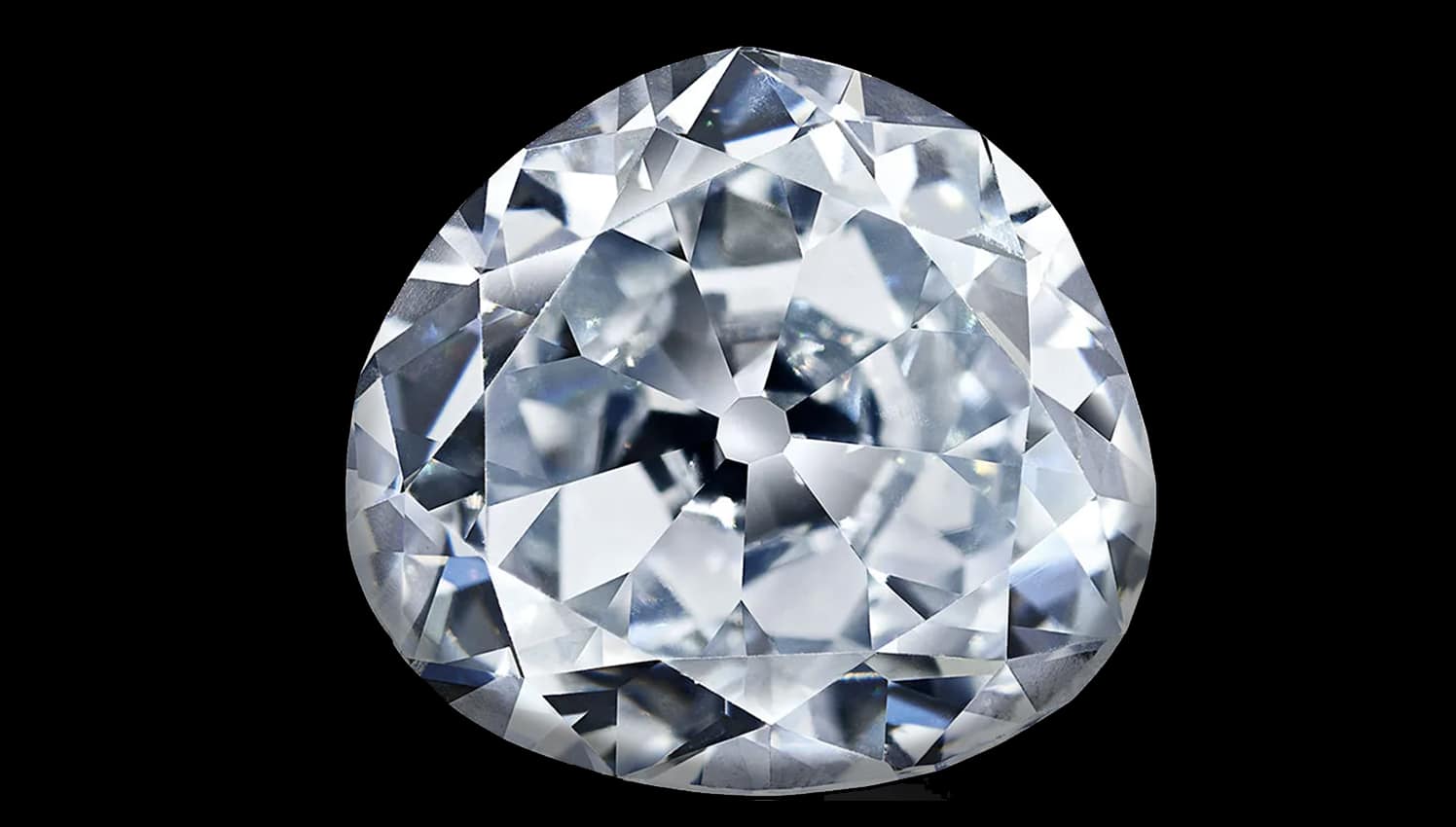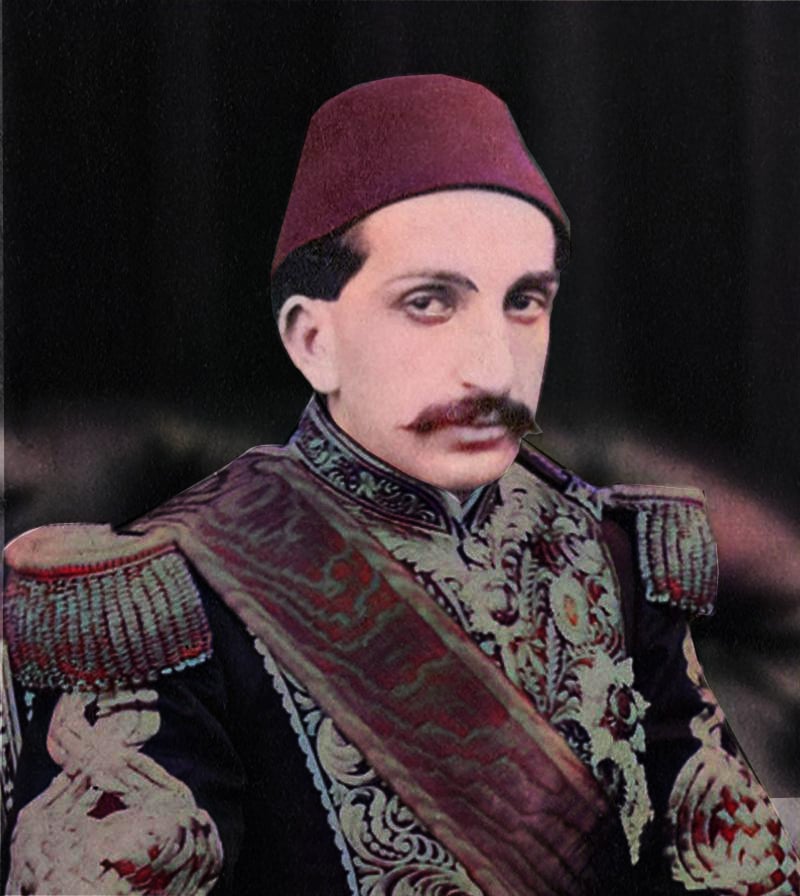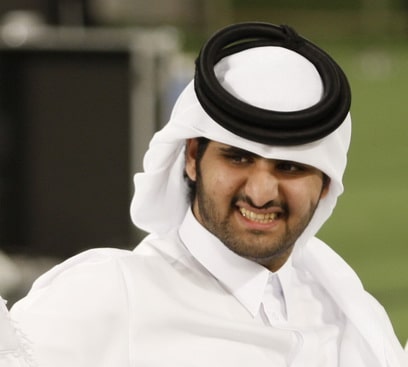Blog
Home » Diamonds blog » STORIED DIAMOND FIRST MINED IN 1600 IN GOLCONDA NOW THE SUBECT OF ROYAL BATTLE IN LONDON
Focus on

The 70.21-carat Idol’s Eye, mined in Golconda, India, in 1600 and now a subject of dispute with the Qatari royal family. (Photo courtesy of Wikipedia Commons)
First discovered in 1600, one of the most celebrated diamonds ever to have been mined at India’s Golconda mine is a today the subject a very public court battle involving two sides of the Qatari royal clan, the al-Thani family.
Called the Idol’s Eye, the stone is a 70.21-carat diamond with a very light blue color. Its quite unique cut involves nine corresponding pavilion facets and a number of non-symmetrical facets, scattered around the crown and pavilion of the stone. It’s what provides the appearance an eye, the origin of its name.
According to legend, its was initially owned by Prince Rahab of Persia, who was said to have sold it to sold it creditors. Its recorded history dates back to July 1865, when it was introduced by Christie’s for auction in London, where it was purchased by the Turkish Ottoman Sultan Abdul Hamid II.
The Sultan was exiled from Turkey in 1909, and was evidently embezzled by a traitorous servant who sold his jewels. It is known that the Idol’s Eye was one of several large diamonds that were publicly sold in Paris and were purchased by a Spanish nobleman.

Turkish Ottoman Sultan Abdul Hamid II, previous owner of of the Idol’s Eye.
A PENDANT TO A NECKLACE
At the end of World War II, the Idol’s Eye was sold to Harry Winston who sold it May Bonfils Stanton. She is said to have worn the Idol’s Eye at breakfast every morning. It was set as the pendant to a diamond necklace containing 41 round brilliants totalling about 22.5 carats, plus another 45 baguettes weighing about 12 carats.
After her death, Stanton’s jewels were auctioned in New York. Chicago jeweler Harry Levinson bought it for $375,000 and loaned it to De Beers for an exhibition at the Diamond Pavilion in Johannesburg in 1967.
In 1973, Levinson put the diamond up for sale in New York but withdrew it when the bidding failed to reach his S1.1 million reserve. It was eventually bought in 1979 by Laurence Graff, who first displayed at the Metropolitan Museum of Art before it was sold.
It then came into the possession of the royal family of the oil-rich Arabian Gulf state of Qatar.
FORCED TO SELL
The current dispute over the Idol’s Eye are rival members of Qatar’s royal family. It is a key element in a lawsuit filed by Qipco, which is a conglomerate run by Sheikh Hamad bin Abdullah, al-Thani a major art collector. Qipco, a private company that sponsors the UK’s Royal Ascot horse races
The defendant in the case is Elanus Holdings Limited, based in the Channel Islands tax haven of Guernsey, which Qipco’s representatives claim is controlled by the heirs of the late Sheikh Saud bin Mohammed al-Thani, who was responsible for the management of Qatar’s extensive national art collection.
Qipco sued in November to force Elanus to sell the “Idol’s Eye” diamondfor a price of at least $10 million under the terms of a 2014 contract between the entities.
The lawsuit revolved around on an agreement signed in may 2014, according to which Elanus would loan loan the “Idol’s Eye” to Qipco for 20 years. The agreement also gave Qipco the right to buy the jewel, if Elanus wanted to sell it, setting the price a $10 million or the average of two valuations from major auction houses, whichever was the higher figure.
The lawsuit claims that in February 2020, a lawyer for the Al-Thani Foundation notified Qipco by letter that the family wished to sell the “Idol’s Eye,” the following month emailed Qipco to say it did not want to part with it. “Due to the coronavirus, the family does not want to sell,” he wrote. Qipco has asked the High Court to require Elanus to complete the sale.
The Qipco lawsuit indicates that Elanus never intended selling the Idol’s eye.

Sheikh Hamad bin Abdullah, al-Thani owner of the Qipco conglomerate. (Photo courtesy of Wikipedia Commons)
